 In the video available to visitors to the Fiumicino Ship Museum next to Rome's international airport, the archaeologist Renato Sebastiani states that without the ancient port of Ostia the greatness of imperial Rome would not have been possible, a metropolis of about one million inhabitants. Certainly a statement that can be shared, but it is only one side of a coin that seems to have many, well more than two. And here we have to open a necessary digression.
In the video available to visitors to the Fiumicino Ship Museum next to Rome's international airport, the archaeologist Renato Sebastiani states that without the ancient port of Ostia the greatness of imperial Rome would not have been possible, a metropolis of about one million inhabitants. Certainly a statement that can be shared, but it is only one side of a coin that seems to have many, well more than two. And here we have to open a necessary digression.
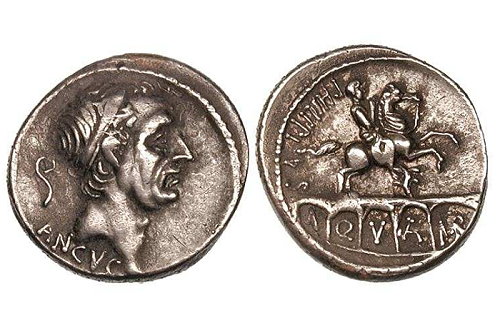 Ostia (from ostium i.e. mouth, gate, entrance) was founded by King Ancus Marzius in the 7th century BC: his descendant Quintus Marcius Rex (surname left to the members of the family) built the Aqua Marcia aqueduct 500 years later, issuing a coin that shows Ancus Martius on the obverse and the aqueduct on the reverse.
Ostia (from ostium i.e. mouth, gate, entrance) was founded by King Ancus Marzius in the 7th century BC: his descendant Quintus Marcius Rex (surname left to the members of the family) built the Aqua Marcia aqueduct 500 years later, issuing a coin that shows Ancus Martius on the obverse and the aqueduct on the reverse.
This is further confirmation of a theorem never sufficiently appreciated and disseminated: Civilizations are born from the sea, and from water. Destroyed by the barbarian invasions in 572 a.D. the Acqua Marcia aqueduct was restored and reactivated in 1872. It is still in operation and supplies one of the most appreciated drinking water sources in Rome after about 2200 years.
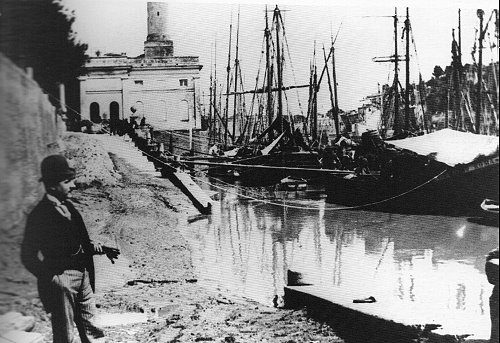 We can expand on Sebastiani's statement: Rome would never even have been founded without the sea, nor would it have ever grown great without water. The first agglomeration was in fact established in the eighth century BC near the meeting place of three different ethnic groups divided by as many rivers.
We can expand on Sebastiani's statement: Rome would never even have been founded without the sea, nor would it have ever grown great without water. The first agglomeration was in fact established in the eighth century BC near the meeting place of three different ethnic groups divided by as many rivers.
The Etruscans lived on the right side of the Tiber, the Sabines occupied the territory between the Tiber and its tributary Aniene, the Latins lived on the left sides of the Aniene and the Tiber.
Among the exchanges of the three peoples who had decided to make water a meeting point and not a separation point, salt was the primary commodity: it came from the nearby coast, about 15 km as the crow flies. It was extracted in the Etruscan area, transported to Rome along the river or along the road which, until a century ago, was still called via della Salara Vecchia, then forwarded to the internal territories of Central Italy along what is still called via Salaria today.
The foundation of Ostia, which happened in a later period, had the purpose of providing Rome with a port near the mouth of the Tiber, to transport foodstuffs to Rome by river boats, but also to put an end to the Etruscan monopoly on the extraction of salt. In the following centuries Ostia expanded to adapt to the growth of Rome. In the imperial era, two new grandiose ports were built to cope with the growing traffic: in the middle of the first century BC by the emperor Claudius and about 70 years later by Trajan. The complex simply took the name of Portus.
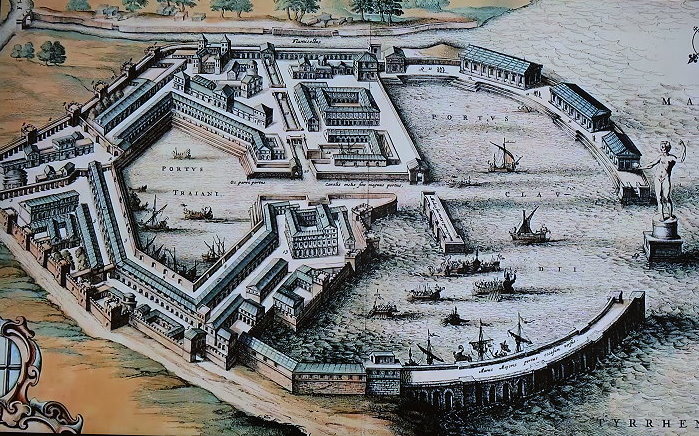
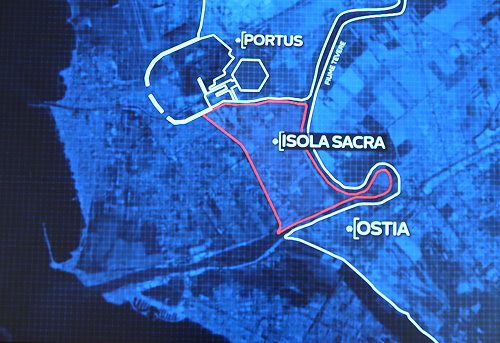 The sediments transported by the Tiber made the coastline advance over the centuries: both Ostia and Portus found themselves more and more inland and were abandoned.
The sediments transported by the Tiber made the coastline advance over the centuries: both Ostia and Portus found themselves more and more inland and were abandoned.
The ruins of what is now called Ostia Antica offer visitors a spectacular insight into life 2,000 years ago, comparable to that offered by Pompeii.
The port of Trajan, an immense magnificent hexagonal structure, can also be visited.
The port of Claudius has instead sunk underground and only a few ruins are visible today.
During the construction work on the airport at the end of the 1950s, the remains of some boats also emerged.
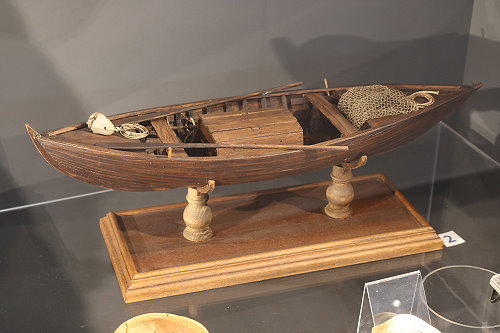 Three types of boats were recovered:
Three types of boats were recovered:
A small sailing boat called 'onoraria':
This was an open sea cargo vessel.
Three 'naves caudicaria':
river barges that transhipped goods to Rome.
The caudicarius was someone who placed a deposit. Perhaps the barges were called like this because the transporter could redeem the deposit upon showing the receipt of the addressee of the merchandise.
And a fishing boat:
called Fiumicino 5
We are about to talk more about it. But we shall not just talk about that boat.








